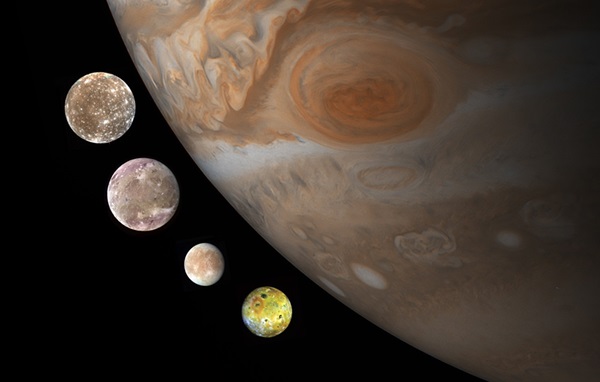Jupiter's Largest Moons Might Have Formed From Dust
The study of exoplanets has revolutionized our understanding of how planets are born and evolve. And now, a new theory applies those insights closer to home.
By Erica Naone May 18, 2020 2:00 PM

The origins of Jupiter's Galilean moons is a long-standing mystery. But new research
suggests a promising pathway for how they may have formed. From bottom to top is
Io, Europa, Ganymede, and Callisto. Jupiter is shown to scale on the right.
(Credit: Moons: NASA/JPL/Galileo; Jupiter: NASA/JPL/Space Science Institute; Image
data processing and layout: Kevin M. Gill)
Using insights gleaned from studying exoplanets, astronomers have developed a new theory that explains the formation of all of Jupiter’s Galilean moons. The team, led by Konstantin Batygin of Caltech, then went on to use the theory to create computer simulations emulating the moons’ formation. The results were promising — to say the least.
As Batygin tells Astronomy, the simulations included one run that was so close to reality that he “had to do a double take.” It was so jarring, he says, “I went on a run to calm down. Came back. And looked at it again.”
The researchers tell a story of how the jovian moons built themselves up — one by one — from tiny motes of icy dust left over from the initial formation of the solar system. Once large enough, each moon then migrated inward, eventually settling into a clockwork-like orbit.
(The new research was published May 18 in The Astrophysical Journal.)
The Need for a New Theory
Previous attempts to understand the origin of planets and moons were tailored to explain our own solar system. But those theories didn’t work when we tried to apply them to the dizzying array of exoplanetary systems discovered in the last few dozen years.
More:
https://www.discovermagazine.com/the-sciences/astronomers-re-create-the-formation-of-jupiters-galilean-moons
